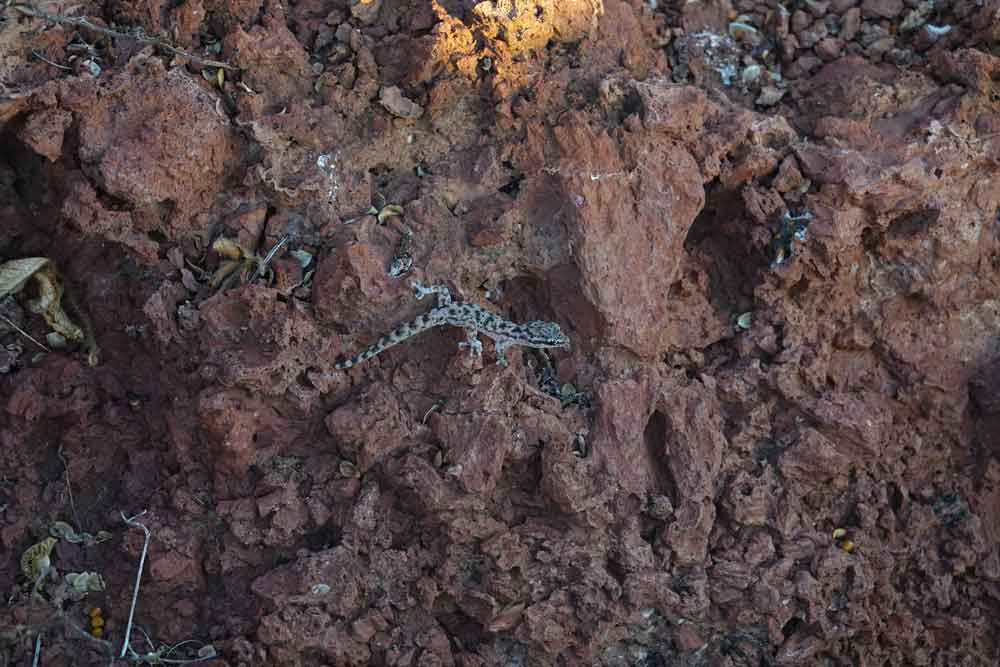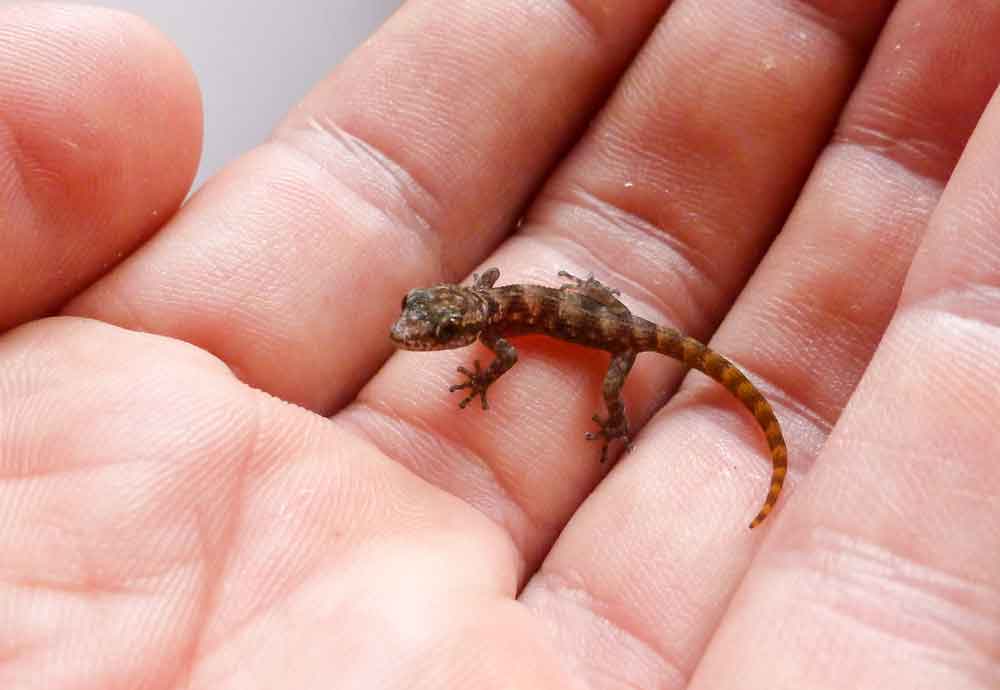A tiny gecko once thought to have gone extinct on the Galapagos Islands’ Rabida Island has been rediscovered after live specimens that were collected
A tiny gecko once thought to have gone extinct on the Galapagos Islands’ Rabida Island has been rediscovered after live specimens that were collected in 2019 and 2021 were confirmed to be the elusive and rare leaf-toed gecko (Phyllodactylus maresi). The lizard was determined to be the leaf-toed gecko via DNA sequencing and morphological analysis.
“The return of this gecko highlights nature’s incredible power to heal itself when given the chance,” Paula Castaño, Island Conservation’s Impact Program Manager said in a statement released to the media. “It’s another example of the recovery we’ve seen on islands worldwide: when you rebalance an ecosystem, it can bounce back quickly and dramatically.”

Phyllodactylus maresi, the leaf-toed gecko of Rabida Island in the Galapagos Island chain. Photo by Island Conservation.
Island Conservation, along with the Galapagos National Park, Charles Darwin Foundation, and The Raptor Center began a conservation intervention in 2011. The effort removed non-native invasive rodents from Rabida Island. This enabled native species such as the leaf-toed gecko to make a comeback, the group said in the press release.
“For over a decade, I have worked with Galápagos geckos, and this research underscores the critical value of collecting specimens and genomic samples for both scientific discovery and conservation efforts in the Galápagos,” Omar Torres-Carvajal, Curator of Reptiles at QCAZ Museum of Zoology said. “This archipelago still holds hidden surprises, waiting to be discovered—yet securing adequate funding remains a significant challenge.”
Pink Iguana Hatchlings Rediscovered On Galápagos Islands Wolf Volcano
Galapagos Island Leaf-toed Gecko Information
Phyllodactylus maresi is a nocturnal gecko that can be found in dry forests, grasslands and shrublands. It is a terrestrial species that forages on rocks and leaf litter and tree trunks up to 2 meters above ground. During the daytime, they hide under treebark, under rocks and inside rotted logs. The lizard is endemic to four islands in the Galapagos island chain, including Bartolomé, Marchena, Santiago, and Rábida.



